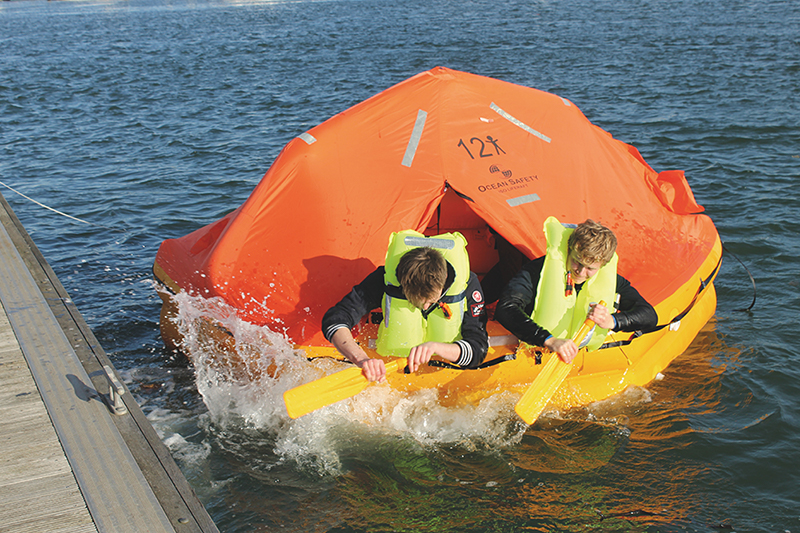No one can claim to be able to describe what it feels like to be in a liferaft for any length of time unless they have truly experienced it in an emergency after they have had to abandon their yacht as a last resort. However, as a liferaft manufacturing company, here at Ocean Safety we can at least provide some guidance on how to launch one, get on board, and what equipment in the raft can help you survive until help arrives.
It is obviously much easier to launch a liferaft in calm conditions than in severe weather but the basic procedure remains the same. Typically, you will launch a canister from a release cradle on deck or, if it’s in a valise, from an on deck locker. It’s tricky to practice this prior to the event – a liferaft needs to be professionally repacked – but one thing you can do is practice lifting it out of its position. To see a liferaft deployed it’s better to attend a demonstration. Ocean Safety run these regularly and you can contact info@oceansafety.com to find one near you. Before you launch make absolutely sure that the liferaft’s painter line is attached to the boat and also that you can cut or untie it easily – a knife is fitted in all liferafts. Once launched the raft should automatically inflate by pulling the painter line. Remember the painter line will be at least 10m long!
It is generally accepted that you should never board the liferaft while your boat is still floating. Once it’s clear that any water leaks cannot be controlled and the boat is succumbing you should be getting hold of your easily accessible grab bag which contains vital items such as medical items, seasickness pills, longlife food and drink, navigation and communication products … and enter the raft. This may be tricky in rough conditions and you may have to find you have to abandon the boat and enter from the water. A strong person should be in the liferaft first, to help weaker swimmers to board. Obviously you need to cut all connecting lines to the boat once you are aboard, so you don’t get pulled down.
Liferafts come in various options from high quality to ‘budget’ models. At the low end of the price range are rafts that are designed for hopefully a quick rescue in busy areas near the shore. Rugged offshore liferafts, however, have boarding ladders, and grab lines and may also feature a knee scoop for extra help. Rafts such as Ocean Safety’s ‘Ocean ISO’ also have an internal and external lighting system.

